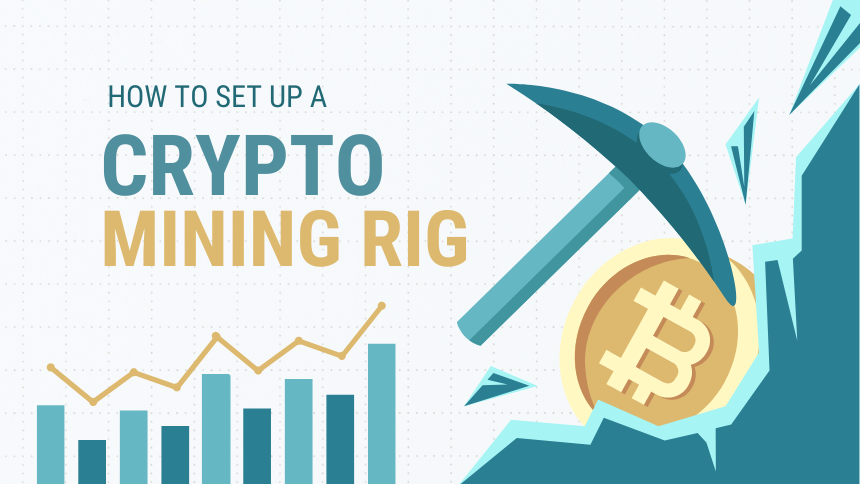Crypto mining rig has become a popular way for individuals to earn digital assets by validating transactions on blockchain networks. Setting up a crypto mining rig at home can be a rewarding endeavor, but it requires careful planning and consideration of various factors. In this comprehensive guide, we will walk you through the process of setting up a crypto mining rig at home, covering everything from hardware selection to mining software installation.
Understanding Crypto Mining Rig
A crypto mining rig is a specialized computer setup designed for cryptocurrency mining. It consists of high-performance hardware like GPUs, CPUs, and ASICs, optimized for solving complex mathematical puzzles to validate transactions on blockchain networks. Miners are rewarded with newly minted coins for their efforts in securing and maintaining the network.
Miners are rewarded with newly minted coins for their efforts in securing and maintaining the network. The process of mining requires significant computational power and electricity consumption, but it can be profitable for those with the right equipment and setup.
Choosing the Right Hardware
- Graphics Processing Units (GPUs): GPUs are commonly used for mining cryptocurrencies like Ethereum and Ravencoin due to their high computational power and efficiency. When selecting GPUs for your mining rig, consider factors such as hash rate, power consumption, and price.
- Central Processing Units (CPUs): While CPUs are less commonly used for mining than GPUs, they can still be effective for mining certain cryptocurrencies like Monero. When choosing a CPU, prioritize factors such as core count, clock speed, and efficiency first.
- ASIC Miners: Application-Specific Integrated Circuit (ASIC) miners are specialized hardware designed specifically for mining certain cryptocurrencies like Bitcoin. While ASIC miners offer high hash rates and efficiency, they are typically more expensive and less versatile than GPUs.

Setting Up Your Mining Rig
Assembling Hardware:
Begin by assembling your mining rig components, including the motherboard, CPU, GPUs or ASIC miners, memory (RAM), power supply unit (PSU), and storage (SSD or HDD). Ensure that all components are compatible and properly connected.
Installing Mining Software:
Choose crypto mining software compatible with your hardware and the cryptocurrency you intend to mine. Popular mining software options include CGMiner, Claymore’s Miner, and NiceHash. Follow the instructions provided by the software developer to install and configure the mining software on your rig.
Configuring Mining Settings:
Once the mining software is installed, configure the mining settings, including pool selection, wallet address setup, and mining intensity or overclocking settings. Joining a mining pool allows you to combine computational power with other miners to increase your chances of earning rewards.
Optimizing Cooling and Ventilation:
Proper cooling and ventilation are essential to prevent overheating and ensure optimal performance of your crypto mining rig. Consider installing additional fans, and cooling systems, or even building a custom mining rig frame with adequate airflow.
Monitoring and Maintenance:
Regularly monitor your mining rig’s performance, including hash rate, temperature, and power consumption. Perform routine maintenance tasks such as cleaning dust buildup, replacing worn-out components, and updating software to ensure smooth operation.
Calculating Profitability
Before investing in a mining rig, it’s essential to calculate the potential profitability based on factors such as hardware costs, electricity costs, mining difficulty, and cryptocurrency prices. Use online mining profitability calculators to estimate potential earnings and determine whether mining is a viable investment for you.
Conclusion
Setting up a crypto mining rig at home can be a rewarding and profitable venture for those willing to invest time, effort, and resources into the process. By carefully selecting hardware, assembling your rig, configuring mining software, optimizing cooling and ventilation, and monitoring performance, you can create a successful mining operation from the comfort of your own home. Remember to consider factors such as profitability, electricity costs, and cryptocurrency market trends before diving into mining, and always prioritize safety and efficiency in your mining endeavors.
